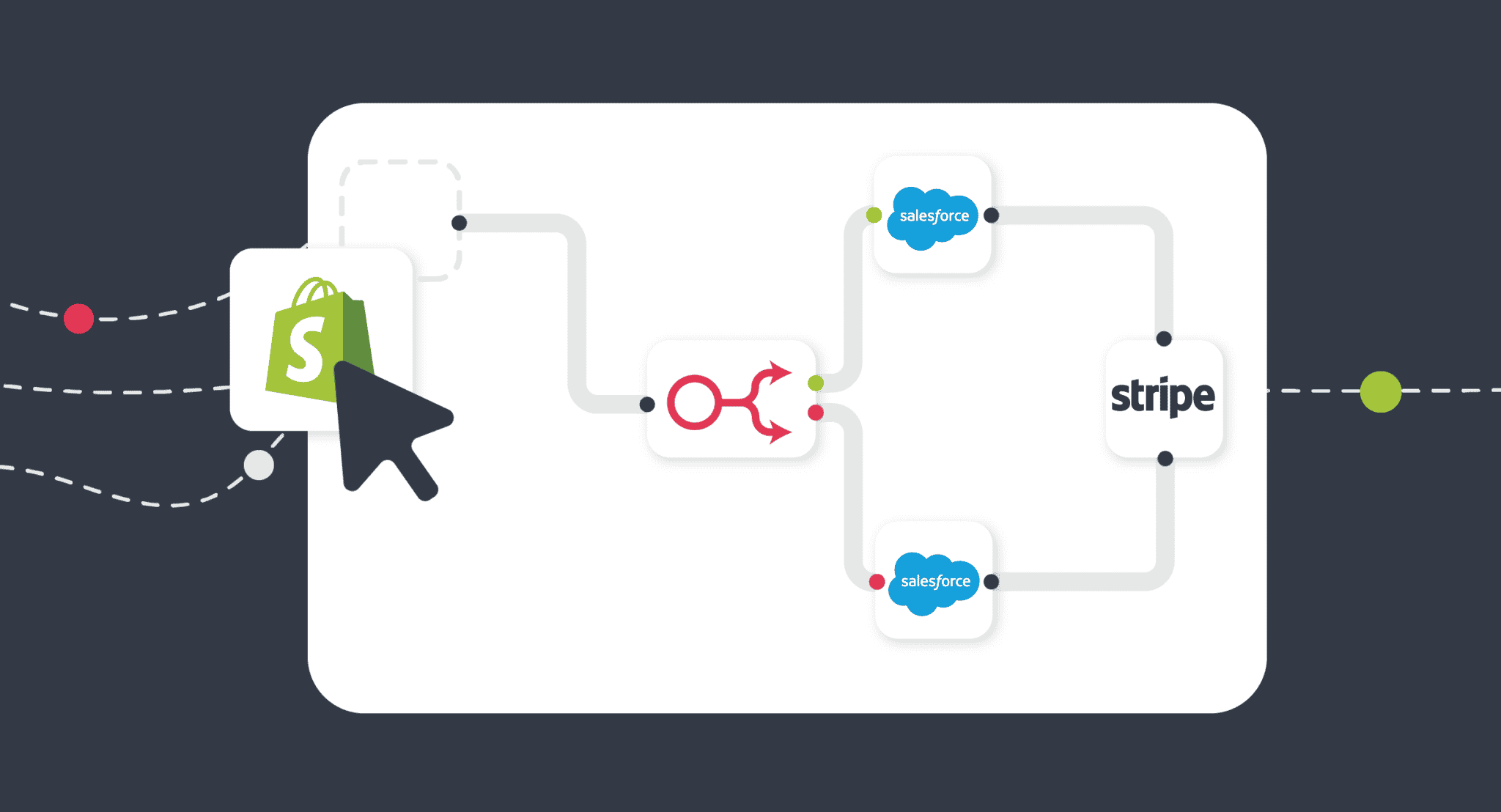
Updated on by Hayley Brown
Push your integrations further with integration tools that can enhance your automation and integrated data.
What are integration tools?
Integration tools are additional components an embedded integration platform provides users with. They are designed to enhance workflows and add further customisation. These tools are typically located in the embedded iPaaS’s integration or workflow builder and are easily dragged and dropped into the workspace.
How can they be used in an automated workflow?
Additional integration tools are helpful because as we previously mentioned they can further enhance the workflow or add necessary customisation. For example, an integration template may include a time delay or a decision step based on the previous Connector action or Webhook trigger.
Cyclr’s Integration Tools
Cyclr is a powerful embedded iPaaS with numerous integration tools available for its users, let’s take a look at them.
Decision Step
The decision step is a branch execution tool that can be implemented into a workflow and can split the retrieved data down a true or false, yes or no branch.
The step works by comparing a Left Operand to a Right Operand; in other words, it looks for a value in your data and compares it – using a specified condition – to another value.
To use a decision step, the integration must contain at least one GET (green) or Webhook (grey) step for the data to be retrieved and work with. Then drag the decision step into the workflow and connect it to where it is needed to split the data.
For example, the fields would be Left Operand: Name, Condition: Equals, Right Operand Smith. The result is that contacts with the last name of “Smith” are routed down the true branch, and all other contacts will go down the false branch.
To create more advanced logic, you can chain multiple Decision steps together, but it is important to remember that decision steps only filter records from the steps to which they refer.
So, what is the advantage of using the decision step? The main advantage of using the decision step is that it can filter the retrieved data. Therefore, further automating manual processes of then sorting the data.
Delay Step
A delay step is a pause in a workflow for a defined number of minutes, hours, days, or longer. In other words, connecting a delay between two other steps will allow a user to set a fixed time that the workflow should wait before it executes the next step. Data from the previous steps can be used to dynamically control the delay.
The delay step works when a user wants to pause their workflow. This could be for when a new user has subscribed and there is a short delay before sending their welcome email. The amount of delay time needs to be specified when the step is initially set up.
It is advantageous to use the delay step to further enhance integrations by pausing certain steps after data has been retrieved. Users can also pause for a period based on a date field in your data. For example, when a contact’s subscription is due for renewal. For this, however, we’d suggest using a Wait Until step.
Wait-Until Step
The wait-until step is another option for pausing a workflow until a fixed point in time, similar to the delay step. However, the wait-until step can be either hard-coded or dynamically defined based on the data retrieved in the previous step.
Users can use the wait-until step in two ways. Firstly, waiting for a specific date, for instance, set a step to wait until the date of an event. A calendar dropdown makes this easy to set.
Another option of use is by adding a dynamic date in the data. For instance, users can set a variable such as a customer’s subscription renewal date.
A huge advantage of the wait-until step is particularly apparent for an organisation’s finance and billing. Especially, for recurring subscription payments, or even email notifications.
Wait All Step
The wait all step is designed to wait for all transactions running in a workflow to complete before moving on and executing the steps that appear after it. As well as add closing steps to a process when an array of transactions are running in parallel.
The step works great when working with collection splitting, in other words where multiple transactions are moving independently through a workflow. Then the steps that proceed can start once the transaction has been completed.
Shortly after all “In Progress” Transactions have been completed in a Cycle, a single new Transaction is created on the Wait All Step to execute any remaining Steps placed after it.
For example, contacts from Salesforce can be split into individual transactions. Each of these transactions contains one contact and will be created in either List A or B in MailChimp depending on the decision step result.
After all, contacts have been processed, the step following the Wait All will be executed. This will post a message on Slack to notify users that the data import has finished.
Annotation Step
The annotation step does what it says, it allows users to annotate or make notes on the integration workflow.
Simply drag and drop the step onto the integration builder and select settings, this will open a text editor where you can add annotations or notes. This is particularly useful for onboarding or training new users, as you’ll be able to explain what is happening during the integration.
We are continually building and creating new features in the Cyclr console so, make sure you have signed up to our newsletter for updates or join our community site.
Get in touch with a member of the team to watch a demo of get a FREE trial.